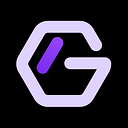Wrapped Tokens Explained: How WGLQ Enhance Your GraphLinq Experience
Why Wrapped Tokens Are Important
One of the main obstacles for blockchain technology is the lack of interoperability — blockchains are, by design, isolated from each other. This means a token on one chain can’t be used on another without some form of adaptation. Supporting assets across multiple blockchains has become essential for DeFi, and wrapped tokens enable this cross-chain flexibility. But it’s not just about cross-chain transactions. For Layer 1 projects, wrapped tokens can be traded or used on own or other blockchains, while their native tokens can still be used within their ecosystems for functions like paying gas fees.
One of the key DeFi products making this possible is the GraphLinq Hub. At the core of this Hub is a decentralized exchange, providing a comprehensive platform for various DeFi activities, like farming LP tokens, staking, swapping, and more.
To trade on the GLQ Chain, GLQ tokens must be wrapped into WGLQ, as native GLQ cannot be directly exchanged. This is similar to how Uniswap operates: when you make a swap using ETH, it automatically wraps it to wETH.
This is where Wrapped GLQ (WGLQ) comes in.
What Is Wrapped GLQ?
Wrapped GLQ (wGLQ) is the wrapped version of GraphLinq’s native token, GLQ. WGLQ is pegged 1:1 with GLQ, so 1 WGLQ always equals 1 GLQ, meaning it maintains the same market value as the original token.
How Wrapped GLQ (WGLQ) Is Used
Once you’ve wrapped your GLQ into WGLQ, you can access a range of DeFi features:
- Liquidity and Trading: WGLQ enables access to liquidity pools, allowing users to trade it for other tokens on DEXs. This is useful for those looking to diversify or take advantage of specific DeFi opportunities without leaving the blockchain environment.
- Swapping and Bridging: By utilizing GraphLinq’s Hub, you can swap WGLQ with other assets, or even bridge it to other blockchains for increased flexibility. For more details on these features, check out GraphLinq’s article on the Hub’s functionalities
How to Get Wrapped GLQ
If you’re looking to wrap your GLQ into WGLQ, it’s a quick and easy process on the GraphLinq Hub. Simply follow these steps:
- Go to the GraphLinq Hub wrapper
- Connect your wallet.
- Enter the amount of GLQ you’d like to wrap out for WGLQ (leave a bit of native GLQ for gas fees).
- Complete the transaction, and you’ll receive WGLQ.
To unwrap WGLQ back into native GLQ, just follow the same steps in reverse.
For more insights into WGLQ and to explore its tokenomics, visit the listing on CoinGecko or visit Hub’s LP on Gecko Terminal.
In addition to WGLQ, the GraphLinq ecosystem includes WETH (Wrapped Ethereum), adding versatility to token swaps. Since WETH is widely accepted and highly liquid, pairing it with WGLQ broadens trading opportunities. This pairing not only boosts accessibility but also streamlines the swap process, resulting in a smoother overall experience for users.
How to Swap WGLQ to WETH
- Go to the GraphLinq Hub swap
- In the “You pay” box, select the amount you’d like to swap.
- In the “You receive” box, you’ll see the amount that you’ll receive in this swap.
- Choose the slippage you’d like to put.
- The approximate fee and network cost are also displayed for your convenience.
- Then click “Send” and prove the amount in your wallet.
Then you can use the bridge to get your ETH on the Ethereum network.
So, whether you’re engaging with WGLQ or WETH, both tokens are designed to streamline your transactions on the platform.
Join us on our socials to stay updated:
Twitter: https://twitter.com/graphlinq_proto
Telegram: https://t.me/graphlinq
Discord: https://discord.com/invite/9FuAvaEH56
Website: https://graphlinq.io/
